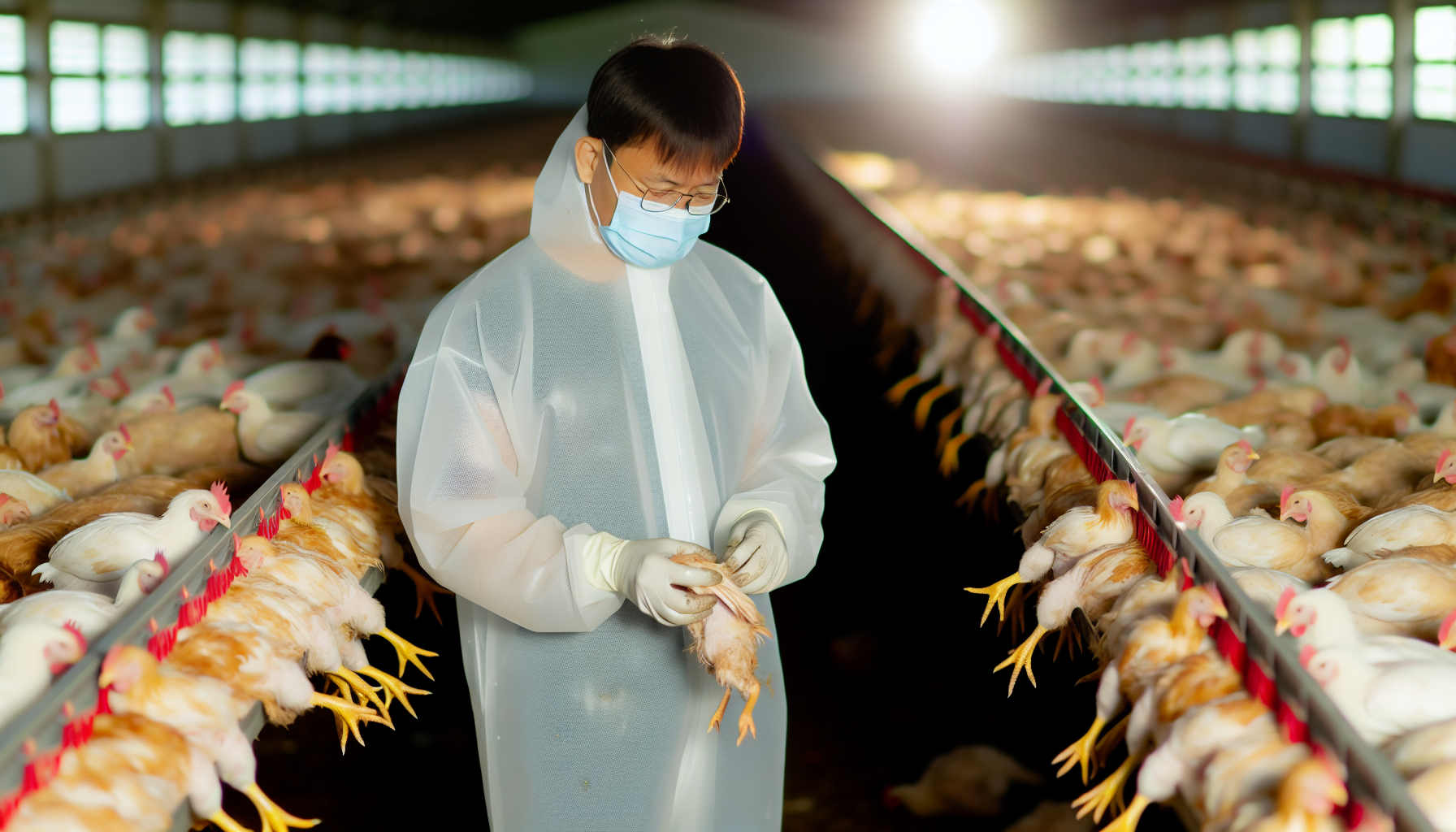The recent surge in human cases of avian influenza, commonly known as bird flu, has raised concerns across the United States. With new cases emerging in multiple states, health officials are closely monitoring the situation and implementing measures to contain the spread. This article delves into the latest developments, potential risks, and precautions recommended by experts.
Recent Cases in Washington State
Washington state has become the latest focal point in the bird flu outbreak, with four new cases detected among farmworkers. These cases have pushed the national total to at least 31, highlighting the growing concern surrounding the virus’s spread. The affected workers were involved in culling birds at a commercial egg facility where an avian influenza outbreak had been reported among chickens.
Symptoms and Outcomes
The infected individuals in Washington state reported mild respiratory issues and conjunctivitis. Fortunately, none of the workers required hospitalization, which is a positive sign regarding the severity of these particular cases. These workers were part of a contracted team responsible for euthanizing chickens at a farm in southeastern Washington, putting them at higher risk of exposure to the virus.
National Context of Bird Flu Spread
The bird flu outbreak is not limited to Washington state alone. In fact, cases have been reported in six states across the country. This widespread occurrence indicates that the virus is actively circulating among wild birds, poultry, and even cattle throughout the United States. The addition of Washington to this list underscores the need for continued vigilance and preventive measures.
Investigation and Monitoring Efforts
In response to the recent cases, a federal team is being dispatched to Washington state to assist with the investigation. Health authorities are conducting thorough interviews to determine the source of transmission, whether it be through wild birds or other means. While the risk to the general public remains low, farmworkers are considered to be at higher risk due to their direct exposure during bird culling activities.
CDC’s Response and Surveillance
The Centers for Disease Control and Prevention (CDC) is taking an active role in monitoring the situation. They are utilizing their flu surveillance systems to track H5 bird flu activity in people across the country. The CDC emphasizes that while the current public health risk is low, they remain vigilant about potential mutations that could increase the risk of human-to-human transmission.
Concerns and Precautionary Measures
Experts in the field have expressed concerns about the virus’s persistence in cattle, which could potentially lead to an increased risk of mutation and transmission. In light of these concerns, several precautionary measures are being advised:
1. Enhanced protective measures for farmworkers, including the use of personal protective equipment (PPE) and strict hygiene protocols.
2. Encouragement for farmworkers to receive flu vaccinations to reduce the risk of co-infection.
3. Recommendations from the CDC to avoid direct contact with wild birds and to take precautions when handling potentially infected animals or surfaces.
4. Increased biosecurity measures on farms and in poultry facilities to prevent the spread of the virus among animal populations.
Seasonal Flu Season and Its Implications
As the seasonal flu season approaches, there is a heightened risk of viruses exchanging genetic material, which could potentially lead to more rapid mutations. This scenario presents additional challenges in managing the spread of both seasonal and avian influenza. The CDC strongly advises getting seasonal flu vaccines to reduce the risk of co-infection with both types of viruses.
Importance of Vaccination
Vaccination plays a crucial role in mitigating the risks associated with both seasonal flu and potential bird flu infections. By reducing the overall burden of influenza in the population, we can minimize the chances of genetic reassortment between different flu strains, which could lead to more virulent or transmissible variants.
Public Health Response and Preparedness
Health authorities at both state and federal levels are working diligently to respond to the evolving situation. This includes:
1. Enhancing surveillance systems to detect new cases quickly.
2. Conducting thorough epidemiological investigations to understand transmission patterns.
3. Collaborating with animal health experts to monitor and control the spread in bird and cattle populations.
4. Developing and updating guidance for healthcare providers and the general public.
Frequently Asked Questions (FAQ)
Q: What is bird flu?
A: Bird flu, or avian influenza, is a type of influenza virus that primarily affects birds but can occasionally infect humans who have close contact with infected birds or their environments.
Q: How does bird flu spread to humans?
A: Bird flu typically spreads to humans through direct contact with infected birds, their droppings, or contaminated surfaces. Human-to-human transmission is rare but possible.
Q: What are the symptoms of bird flu in humans?
A: Symptoms can range from mild (like conjunctivitis and mild respiratory issues) to severe (including pneumonia and acute respiratory distress). In the recent cases, most infected individuals experienced mild symptoms.
Q: Is there a vaccine for bird flu?
A: There is no widely available vaccine for bird flu in humans. However, seasonal flu vaccines are recommended to reduce the risk of co-infection and potential genetic reassortment between viruses.
Q: How can I protect myself from bird flu?
A: Avoid direct contact with wild birds, practice good hygiene, and follow CDC guidelines if you work with poultry or in high-risk environments.
Conclusion
The recent increase in bird flu cases among humans in the United States, particularly in Washington state, serves as a reminder of the ongoing challenges posed by zoonotic diseases. While the current risk to the general public remains low, the situation underscores the importance of continued vigilance, robust surveillance systems, and adherence to preventive measures. As we approach the seasonal flu season, it becomes even more critical for individuals, especially those in high-risk occupations, to take necessary precautions and stay informed about the latest developments in public health guidance.
Source: NBC News – Bird flu cases in people tick up: Dozens reported across 6 states
